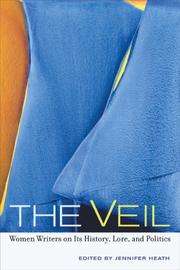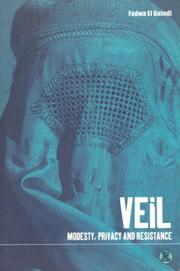| Listing 1 - 10 of 19 | << page >> |
Sort by
|
Book
ISBN: 1139626825 1108654363 1107039924 110871420X 1108619177 9781108654364 9781139626828 9781107039926 Year: 2018 Publisher: Cambridge Cambridge University Press
Abstract | Keywords | Export | Availability | Bookmark
 Loading...
Loading...Choose an application
- Reference Manager
- EndNote
- RefWorks (Direct export to RefWorks)
What happens when a corporate subsidiary or network company is unable to pay personal injury victims in full? This book sets out to tackle the 'insolvent entity problem', especially as it arises in cases of mass wrongdoing such as those involving asbestos exposure and defective pharmaceuticals. After discussing the nature of corporate groups and networks from the perspectives of business history, organisation studies, and social theory, the book assesses a range of rules and proposed rules for extending liability for personal injuries beyond insolvent entities. New proposals are put for an exception to the rule of limited liability and for the development of a flexible new tort based on conspiracy that encompasses not only control-based relationships but also horizontal coordination between companies. The book concludes with a general discussion of lessons learned from debates about extended liability and provides guidelines for the development of new liability rules.
Tort liability of corporations. --- Corporation law. --- Corporate veil. --- Company law --- Corporate law --- Corporations --- Law, Corporation --- Trusts, Industrial --- Commercial law --- Tort liability of nonprofit organizations --- Nonprofit organizations --- Corporate veil-piercing --- Disregard of corporate entity --- Disregarding the corporate entity --- Piercing the corporate veil --- Veil, Corporate --- Veil-piercing, Corporate --- Corporation law --- Limited liability --- Law and legislation --- Law
Book
ISBN: 3839430941 9783839430941 Year: 2015 Publisher: Bielefeld Transcript
Abstract | Keywords | Export | Availability | Bookmark
 Loading...
Loading...Choose an application
- Reference Manager
- EndNote
- RefWorks (Direct export to RefWorks)
Die stereotype Stigmatisierung des Kopftuchs ist eine Praxis des antimuslimischen Rassismus! Auf der Basis qualitativer Interviewdaten legt Florian Kreutzer alltägliche Praktiken rassistischer Diskriminierung, des Doing Race and Racial Othering offen - und ebenso die Praktiken und Möglichkeiten des Undoing Race, des Durchkreuzens, Unterlaufens, Überwindens und Ungeschehen-Machens der rassistischen Produktion von Andersheit. Die Erzählungen verschleierter Frauen machen deutlich, dass sie sich in ihrer Art und Weise, Familie und Beruf zu vereinbaren, nicht wesentlich von anderen Frauen unterscheiden. Die rassistische Produktion von Andersheit wird so als eine soziale Praxis und strukturelle Dimension moderner Gesellschaften erkennbar. Unter Mitarbeit von Sümeyye Demir. »Insbesondere angesichts der Debatten um Integration und Flüchtlingskrise ist dieses Buch unbedingt empfehlenswert.« Elisabeth Mantl, http://www.elisabeth-mantl.de, 12 (2015) »Man kann diesem Buch nur eine breite Leserschaft wünschen.« Dirk Pilz, Frankfurter Rundschau, 10.06.2015 Besprochen in: IDA-NRW, 21/2 (2015) www.frauensolidaritaet.org VKRG inform, 4 (2015) Portal für Politikwissenschaft, 04.02.2016, Wolfgang Denzler
Gender; Islam; Rassismus; Migration; Integration; Stigma; Kopftuch; Geschlecht; Islamwissenschaft; Gender Studies; Arbeits- und Industriesoziologie; Racism; Veil; Islamic Studies; Sociology of Work and Industry --- Gender Studies. --- Integration. --- Islam. --- Islamic Studies. --- Migration. --- Racism. --- Sociology of Work and Industry. --- Stigma. --- Veil.

ISBN: 1282772317 9786612772313 0520941608 9780520941601 9780520250406 0520250400 9780520255180 0520255186 9781282772311 661277231X Year: 2008 Publisher: Berkeley University of California Press
Abstract | Keywords | Export | Availability | Bookmark
 Loading...
Loading...Choose an application
- Reference Manager
- EndNote
- RefWorks (Direct export to RefWorks)
This groundbreaking volume, written entirely by women, examines the vastly misunderstood and multilayered world of the veil. Veiling- of women, of men, and of sacred places and objects-has existed in countless cultures and religions from time immemorial. Today, veiling is a globally polarizing issue, a locus for the struggle between Islam and the West and between contemporary and traditional interpretations of Islam. But veiling was a practice long before Islam and still extends far beyond the Middle East. This book explores and examines the cultures, politics, and histories of veiling. Twenty-one gifted writers and scholars, representing a wide range of societies, religions, ages, locations, races, and accomplishments, here elucidate, challenge, and/or praise the practice. Expertly organized and introduced by Jennifer Heath, who also writes on male veiling, the essays are arranged in three parts: the veil as an expression of the sacred; the veil as it relates to the emotional and the sensual; and the veil in its sociopolitical aspects. This unique, dynamic, and insightful volume is illustrated throughout. It brings together a multiplicity of thought and experience, much of it personal, to make readily accessible a difficult and controversial subject. Contributors: Kecia Ali, Michelle Auerbach, Sarah C. Bell, Barbara Goldman Carrel, Eve Grubin, Roxanne Kamayani Gupta, Jana M. Hawley, Jasbir Jain, Mohja Kahf, Laurene Lafontaine, Shireen Malik, Maliha Masood, Marjane Satrapi, Aisha Shaheed, Rita Stephan, Pamela K. Taylor, Ashraf Zahedi, Dinah Zeiger, Sherifa Zuhur
Veils --- Veils in literature. --- Headgear --- Hijab (Islamic clothing) --- Social aspects. --- History. --- american muslim women. --- amish veil. --- community. --- controversial. --- cultural studies. --- dress code. --- emotional. --- expression of the sacred. --- gender studies. --- gospel. --- groundbreaking. --- hasidic women. --- hijab. --- identity. --- india. --- islam. --- islamic dress. --- male veiling. --- medieval europe. --- middle east. --- modesty. --- mourning. --- muslim women. --- patriarchy. --- religious studies. --- sensual. --- separation. --- seven veils. --- sociopolitical. --- trauma. --- veil. --- veiling. --- wearing a veil. --- wedding veil. --- womanhood. --- women.

ISBN: 2080666762 9782080666765 Year: 1994 Publisher: [Paris] : Flammarion,
Abstract | Keywords | Export | Availability | Bookmark
 Loading...
Loading...Choose an application
- Reference Manager
- EndNote
- RefWorks (Direct export to RefWorks)
Issue d'une famille juive française et républicaine, Simone Jacob est éprouvée très tôt par le destin lorsque la barbarie nazie la conduit, avec sa mère et sa soeur aînée, à Auschwitz. Mariée et mère de famille, sa vie publique commence au ministère de la Justice. Confrontée aux atrocités de la guerre d'Algérie, elle participe au sauvetage des prisonnières. De la cause des femmes, elle fait ensuite son combat: ministre de la République, elle obtient en 1974 la légalisation de l'avortement... Retracer le destin tragique et superbe de Simone Veil, c'est avant tout comprendre l'histoire de ce siècle.
Veil, Simone --- Statesmen --- Abortion --- Jews --- Hommes d'Etat --- Avortement --- Juifs --- Biography. --- Government policy --- History --- Persecutions --- Biographies --- Politique gouvernementale --- Histoire --- Persécutions --- Veil, Simone. --- Auschwitz (Poland : Concentration camp) --- Europe --- France --- Auschwitz (Pologne : Camp de concentration) --- Politics and government --- Politique et gouvernement --- Biography --- -Statesmen --- -Jews --- -929 VEIL, SIMONE --- Hebrews --- Israelites --- Jewish people --- Jewry --- Judaic people --- Judaists --- Ethnology --- Religious adherents --- Semites --- Judaism --- Public officers --- Abortion, Induced --- Feticide --- Foeticide --- Induced abortion --- Pregnancy termination --- Termination of pregnancy --- Birth control --- Fetal death --- Obstetrics --- Reproductive rights --- -History --- -Biography --- -Surgery --- Auschwitz (Concentration camp) --- KL Auschwitz --- Oświęcim (Concentration camp) --- Konzentrationslager Auschwitz --- Oshṿits (Concentration camp) --- Aušvic (Concentration camp) --- KZ Auschwitz --- Auschwitz I (Concentration camp) --- Concentration camp "Auschwitz" --- CC Auschwitz --- אוישוויץ --- אושוויץ --- אושוויץ (מחנה-ריכוז) --- מחנה אושווינצ׳ים --- Osvent︠s︡im (Concentration camp) --- Aushvit︠s︡ (Concentration camp) --- -Veil, Simone --- Persécutions --- 929 VEIL, SIMONE --- Surgery --- Освенцим (Concentration camp) --- Aousvits (Concentration camp) --- Statesmen - France - Biography --- Statesmen - Europe - Biography --- Abortion - Government policy - France - History - 20th century --- Jews - Persecutions - France --- Аушвіц (Concentration camp)
Book
ISBN: 9781107058309 9781107415591 9781107639508 1107639506 Year: 2014 Publisher: Cambridge Cambridge University Press
Abstract | Keywords | Export | Availability | Bookmark
 Loading...
Loading...Choose an application
- Reference Manager
- EndNote
- RefWorks (Direct export to RefWorks)
"One of the most remarkable aspects pertaining to the legal bans and societal debates on the face veil in Europe is that they rely on assumptions which lack any factual basis. To rectify this, Eva Brems researched the experiences of women who wear a face veil in Belgium, and brought her research results together with those of colleagues who did the same in four other European countries. Their findings, which are outlined in this volume, move the current discussion on face veil bans forward by providing a much-needed insider perspective"--
Muslim women --- Hijab (Islamic clothing) --- Islamic clothing and dress --- Legal status, laws, etc. --- Law and legislation --- Social aspects --- Muslim women Legal status, laws, etc. Europe, Western. --- Hijab (Islamic clothing) Law and legislation Europe, Western. --- Islamic clothing and dress Social aspects Europe, Western. --- Muslim women Legal status, laws, etc. Europe, Western --- Hijab (Islamic clothing) Law and legislation Europe, Western --- Islamic clothing and dress Social aspects Europe, Western --- Muslim women - Legal status, laws, etc. - Europe, Western --- Hijab (Islamic clothing) - Law and legislation - Europe, Western --- Islamic clothing and dress - Social aspects - Europe, Western --- wearing the face veil in Europe --- face veiling in the Netherlands --- Niqabis in Denmark --- subculture --- the Belgian 'Burqa ban' --- France --- England --- debating the face veil --- the human rights debate on face veil bans --- symbolism --- unveiling Muslim women --- the protection of public order --- full-face covering in France --- Islamic veil bans --- gender equality justification --- women's oppression --- face-veil bans --- feminism --- criminalizing facial veils in Europe --- state sovereignty --- the face-veil ban in Belgium --- face-veil controversies in Europe --- the political agenda
Book
ISBN: 9789462673007 9462673004 Year: 2022 Publisher: Berchem EPO
Abstract | Keywords | Export | Availability | Bookmark
 Loading...
Loading...Choose an application
- Reference Manager
- EndNote
- RefWorks (Direct export to RefWorks)
Als feministisch en antiracistisch collectief strijdt BOEH! (Baas Over Eigen Hoofd!) voor het recht op zelfbeschikking van iedere vrouw over haar eigen doen en laten, over haar lichaam en leven. Het recht om in alle vrijheid zelf de keuze te maken om al dan niet een hoofddoek te dragen staat daarbij centraal. Ontstaan uit de protestactie tegen het Antwerpse hoofddoekenverbod voor stadsambtenaren in 2007, heeft BOEH! als feitelijke vereniging van vrijwilligers een unieke positie ingenomen in de intersectionele emancipatiestrijd van vrouwen van kleur en vrouwen die tot een religieuze minderheid behoren. Dit boek kijkt terug op dat afgelegde parcours waarin de organisatie naast het opzetten van vernuftige sensibiliseringsacties ook juridische acties ondernam tegen de schending van het recht van vrouwen op de uitoefening van hun religieuze vrijheid. Aan de hand van inspirerende essays, literaire bijdragen en illustraties blikt het boek terug op dat verleden en kijkt het vooruit naar de toekomst.(https://www.standaardboekhandel.be/p/boeh-9789462673007)
Feminisme --- Racisme --- Hoofddoek --- Islam --- Sociology of minorities --- Sociology of the family. Sociology of sexuality --- Sociology of culture --- Social problems --- Community organization --- Human rights --- Persoon met een migratieachtergrond --- Vrouwenemancipatie --- Vrouwenrechten --- 657 Vrouwenemancipatie --- hoofddoeken --- Feminism --- Racism --- Feminist struggle --- Book --- Veil --- Intersectionality
Book
ISBN: 147984229X 9781479842292 Year: 2020 Publisher: New York, NY
Abstract | Keywords | Export | Availability | Bookmark
 Loading...
Loading...Choose an application
- Reference Manager
- EndNote
- RefWorks (Direct export to RefWorks)
"The Sociology of W.E.B. Du Bois" explores racism and colonialism at the center of the understanding of modernity"--.
Du Bois, William E. B. --- USA --- Agency. --- Chance. --- Colonial commodity. --- Coloniality. --- Contextuality. --- Contrast. --- Cooperative economy. --- Du Boisian Sociology. --- Global veil. --- Heterogeneity. --- Historicity. --- History. --- Induction. --- Intersectionality. --- Pragmatism. --- Propaganda. --- Public Sociology. --- Racial and colonial capitalism. --- Relationality. --- Scholar activist. --- Science and activism. --- Second sight. --- Socialism. --- Solidarity. --- Standpoint. --- The racial state. --- The social study. --- The talented tenth. --- The veil. --- Twoness. --- Whiteness. --- double consciousness. --- global color line. --- law and chance. --- panafricanism. --- racialized modernity. --- racialized subjectivity. --- the black radical tradition. --- the color line.

ISBN: 052187064X 9780521870641 9780511487965 9780521187381 9780511261503 0511261500 0511487967 0511259735 9780511259739 0511260938 9780511260933 9780511260384 0511260385 0521187389 1107171741 1280749482 0511320442 Year: 2007 Volume: 139 Publisher: Cambridge, U.K. New York Cambridge University Press
Abstract | Keywords | Export | Availability | Bookmark
 Loading...
Loading...Choose an application
- Reference Manager
- EndNote
- RefWorks (Direct export to RefWorks)
In this 2006 text, Daniel M. Gurtner examines the meaning of the rending of the veil at the death of Jesus in Matthew 27:51a by considering the functions of the veil in the Old Testament and its symbolism in Second Temple and Rabbinic Judaism. Gurtner incorporates these elements into a compositional exegesis of the rending text in Matthew. He concludes that the rending of the veil is an apocalyptic assertion like the opening of heaven revealing, in part, end-time images drawn from Ezekiel 37. Moreover, when the veil is torn Matthew depicts the cessation of its function, articulating the atoning role of Christ's death which gives access to God not simply in the sense of entering the Holy of Holies (as in Hebrews), but in trademark Matthean Emmanuel Christology: 'God with us'. This underscores the significance of Jesus' atoning death in the first gospel.
Veil of the Temple (Jerusalem) --- Bible. --- Bible. N.T. Evangiles. Matthieu (anglais). 2007. Gurtner, D. --- 226.2 --- 225*5 --- Curtain of the Temple (Jerusalem) --- Inner Veil of the Temple (Jerusalem) --- Parokhet (Jerusalem) --- Temple Curtain (Jerusalem) --- Temple Veil (Jerusalem) --- Draperies --- Evangelie volgens Matteüs --- Laatste avondmaal. Proces van Jezus. Lijden. Kruisiging --- 225*5 Laatste avondmaal. Proces van Jezus. Lijden. Kruisiging --- Veils. --- Headgear --- Hijab (Islamic clothing) --- Bible --- Evangelie volgens Matteus --- Evangelie volgens Matthéüs --- Matʻae pogŭm --- Matai den --- Matai ni yoru fukuinsho --- Matius (Book of the New Testament) --- Mattá --- Matteo (Book of the New Testament) --- Matteus --- Matthäusevangelium --- Matthéüs --- Matthew (Book of the New Testament) --- Matthieu (Book of the New Testament) --- Criticism, interpretation, etc. --- Arts and Humanities --- Religion

ISBN: 1859739296 1859739245 1845208846 0585436622 Year: 2000 Publisher: Oxford Berg
Abstract | Keywords | Export | Availability | Bookmark
 Loading...
Loading...Choose an application
- Reference Manager
- EndNote
- RefWorks (Direct export to RefWorks)
Shortlisted for the Katharine Briggs Folklore Award 2000. In the 1970s, often to the consternation of parents and siblings, certain progressive young Arab women voluntarily donned the veil. The movement, which rapidly expanded and continues to gather momentum, has sparked controversy within Islamic culture, as well as reactions ranging from perplexity to outrage from those outside it. Western feminist commentators have been particularly vociferous in decrying the veil, which they glibly interpret as a concrete manifestation of patriarchal oppression. However, most Western observers fail to realize that veiling, which has a long and complex history, has been embraced by many Arab women as both an affirmation of cultural identity and a strident feminist statement. Not only does the veil de-marginalize women in society, but it also represents an expression of liberation from colonial legacies. In short, contemporary veiling is more often than not about resistance. By voluntarily removing themselves from the male gaze, these women assert their allegiance to a rich and varied tradition, and at the same time preserve their sexual identity. Beyond this, however, the veil also communicates exclusivity of rank and nuances in social status and social relations that provide telling insights into how Arab culture is constituted. Further, as the author clearly demonstrates, veiling is intimately connected with notions of the self, the body and community, as well as with the cultural construction of identity, privacy and space. This provocative book draws on extensive original fieldwork, anthropology, history and original Islamic sources to challenge the simplistic assumption that veiling is largely about modesty and seclusion, honor and shame.
Muslim women. --- Veils --- Muslim women --- Voiles (Coiffures) --- Musulmanes --- Customs and practices --- Clothing --- Coutumes et pratiques --- Costume --- Customs and practices. --- Clothing. --- Arab States --- Sociology of culture --- History --- Ethnology. Cultural anthropology --- Islam --- History of civilization --- Religious studies --- Social aspects. --- Social aspects --- Aspect social --- Arab states --- Fashion --- Norms --- Appearance --- Book --- Anthropology --- Veil
Book
ISBN: 9054601256 9789054601258 Year: 2005 Publisher: Utrecht Forum
Abstract | Keywords | Export | Availability | Bookmark
 Loading...
Loading...Choose an application
- Reference Manager
- EndNote
- RefWorks (Direct export to RefWorks)
In deze publicatie staat de islamitische basisschool centraal. Buitenstaanders en sommige allochtone organisaties hebben een aantal bezwaren tegen islamitische scholen geuit. Zo zouden islamitische basisscholen een slechte basis vormen voor interreligieuze en interculturele dialoog en opvoeding. De scholen zouden ook de segregatie tussen jongens en meisjes bevorderen door meisjes en jongens volledig apart te houden binnen de school. De auteur belicht hoe in de islam over opvoeding en onderwijs gedacht wordt.
Islam --- Sociology of the family. Sociology of sexuality --- Sociology of minorities --- Religious studies --- Sociology of culture --- Sociology of work --- Sexology --- Netherlands --- Primary education --- Teaching --- Kindergarten --- empowerment --- vrouwen --- Human rights --- huwelijk --- vrouwenarbeid --- onderwijs --- opvoeding --- VROUWENRECHTEN -- 340.3 --- MOSLIMVROUWEN -- 301.188.4 --- ISLAM -- 301.188.4 --- VROUWENRECHTEN -- 301.188.4 --- ISLAM -- 340.3 --- Rechten van de vrouw ; islam --- 11.80 Islam: general. --- Human rights. --- Islam. --- Rechten. --- Vrouwen. --- empowerment. --- vrouwen. --- Religious texts --- Images of women --- Book --- Empowerment --- Homosexuality --- Marriage --- Migration background --- Labour --- Sexuality --- Divorce --- Veil --- Education
| Listing 1 - 10 of 19 | << page >> |
Sort by
|

 Search
Search Feedback
Feedback About UniCat
About UniCat  Help
Help News
News